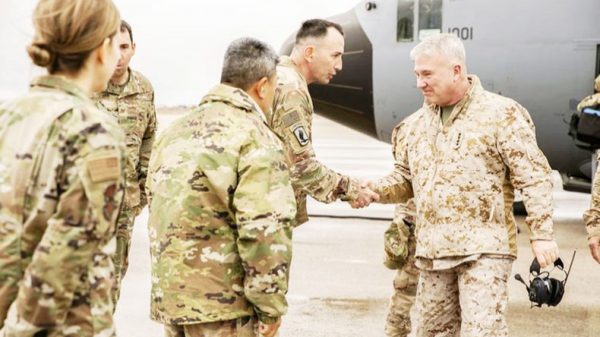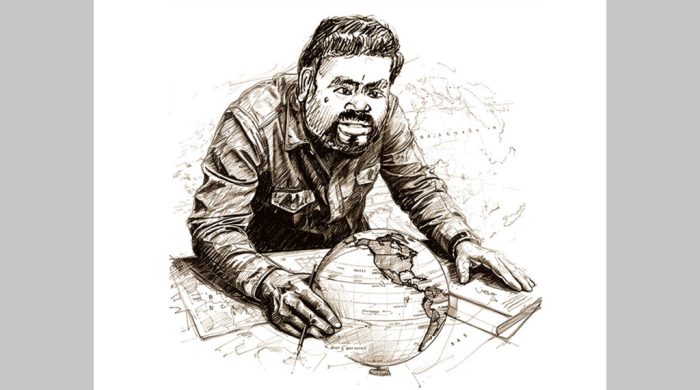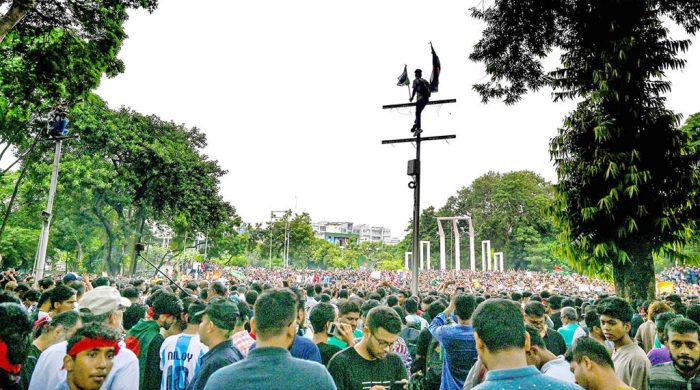US warfare has failed either way

- Update Time : Saturday, March 14, 2020
- 222 Time View

High-tech warfare is not defeating the US’s many enemies any better than its vast army did — and that leaves the country making bizarre alliances, writes Paul Rogers
THIS week two incidents in Iraq have powerfully demonstrated the changing character of warfare and the continuing futility of the wars now being fought. On Sunday, two members of a US Marine Corps special forces unit were killed in the southern Makhmur Mountains in Iraq. They were in a joint operation with Iraqi special forces against ISIS paramilitaries to drive them out of a complex of tunnels in the mountains.
Some hint of the difficulty of the continuing fight against ISIS is given by a news story in Marine Times: ‘The fighting was so intense and the region so remote it took coalition forces six hours to recover the bodies of the two Marines.’ So much for Donald Trump’s claim that ISIS has been defeated.
Three days later a barrage of eighteen unguided 107-millimetre Katyusha rockets was fired at Camp Taji, a large Iraqi military training base north of Baghdad. One British and two US soldiers were killed, and a dozen people reported wounded. At the time of writing those responsible for the attack have not been identified but Washington sources suspect an Iranian-backed Iraqi Shi’a militia group called Kata-ib Hezbollah. If that is substantiated Trump may well order retaliation, not least to divert attention from his own domestic problems with COVID-19.
The two incidents show that the war in Iraq persists even as security deteriorates in much of the Sahel region of Saharan Africa and the US attempts to extricate itself from the eighteen-year Afghan war. It is well worth putting this in a much wider context stretching over near three decades. Back in 1993, a couple of years after the end of the Cold War, Bill Clinton’s new CIA director, James Woolsey, said: ‘Yes, we have slain a large dragon. But we live now in a jungle filled with a bewildering variety of poisonous snakes.’ The Soviet Union was gone but the US now faced unseen threats from sub-state groups and would have to fight wars in very different ways.
US armed forces adapted to this changed world of the mid-1990s by slashing nuclear arsenals, withdrawing heavy armour from Western Europe and severely reducing the navy’s vast anti-submarine warfare capabilities. Military budgets fell, as did personnel numbers, but there was a new emphasis on ‘stand-off’ weapons such as cruise missiles, amphibious forces, carrier-based air power and special forces. Wars would still be fought in far-off places but no longer with tens of thousands of boots on the ground.
It was a stance that seemed to suit the mysterious and threatening jungle out there, famously characterised by George W Bush at the start of his presidential election campaign in January 2000:
‘…it was a dangerous world and we knew exactly who the “they” were. It was us versus them and we knew exactly who them was. Today we’re not so sure who the “they” are but we know they’re there.’
A year later he was in the White House and his new secretary of defence, Donald Rumsfeld, was rapidly reshaping US forces to be even more light-touch and high-tech in taming the jungle. On September 11 that year the ‘they’ in that jungle showed exactly how they could bite back.
Afghanistan and Iraq started as high-tech wars (remember ‘shock and awe’?) but rapidly evolved into widespread insurgencies. In response, the US and its few allies committed hundreds of thousands of boots on the ground, leaving bitter legacies both in the newly occupied countries and in the West as well.
Not least because of this we have steadily returned in the last fifteen years to the original light-touch ideas plus the new technologies of eyes in the sky, armed drones and long-range strike, as well as special forces and privatised military corporations, AKA mercenaries. Alongside this has come the policy of training and arming local forces, whether official or private, while drones and special forces handle the tricky bits of counterinsurgency that the other methods of warfare can’t easily reach.
On occasions it even means supporting your enemy against a greater threat, such as this week’s extraordinary admission from the head of US Central Command, General Kenneth F McKenzie Jr, that his forces have offered ‘limited support’ to the Taliban in its fight with ISIS.
This is where we come back to the incidents of the last two days, which provide yet more proof that the wars will go on and on. Even if a peace deal is agreed in Afghanistan and even if it sticks, the end result will be a major Taliban presence in the country’s governance, and the instability and violence in Iraq, Syria and the Sahel show no signs of ending. In short, this week’s Makhmur and Taji incidents are reminders that, close to nineteen years after 9/11, the US and its few allies are still no nearer to ending the wars. Trying to understand rather than tame ‘the jungle’ might be a good first step.
OpenDemocracy.net, March 12. Paul Rogers is professor of peace studies at Bradford University, northern England. His latest book is Irregular War: ISIS and the New Threat from the Margins.



















